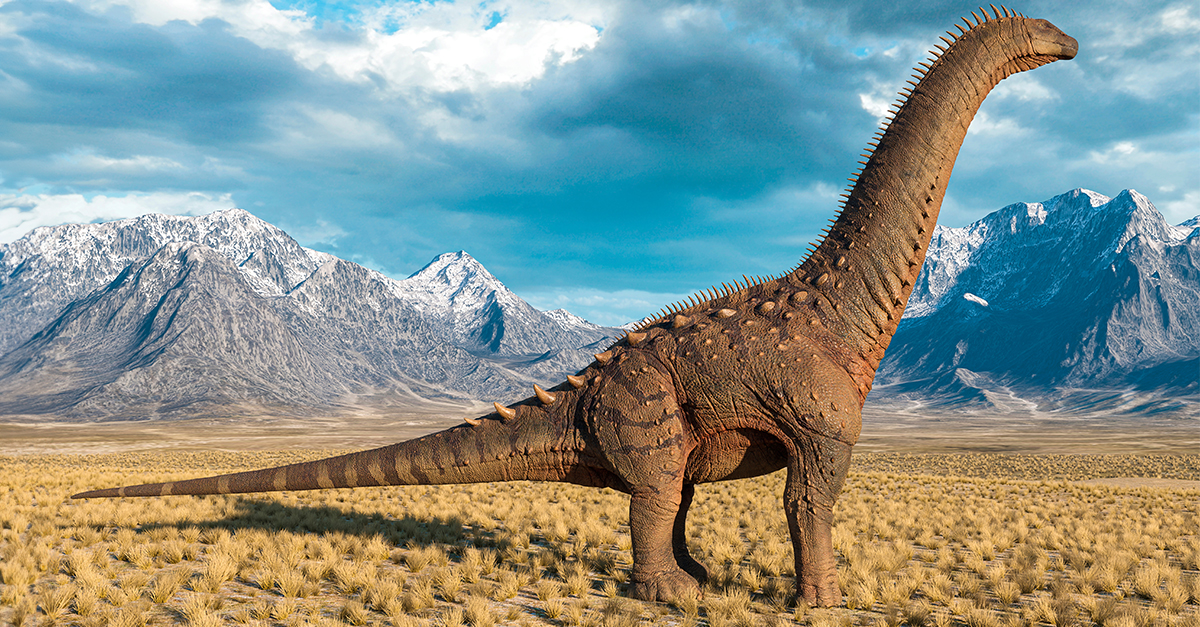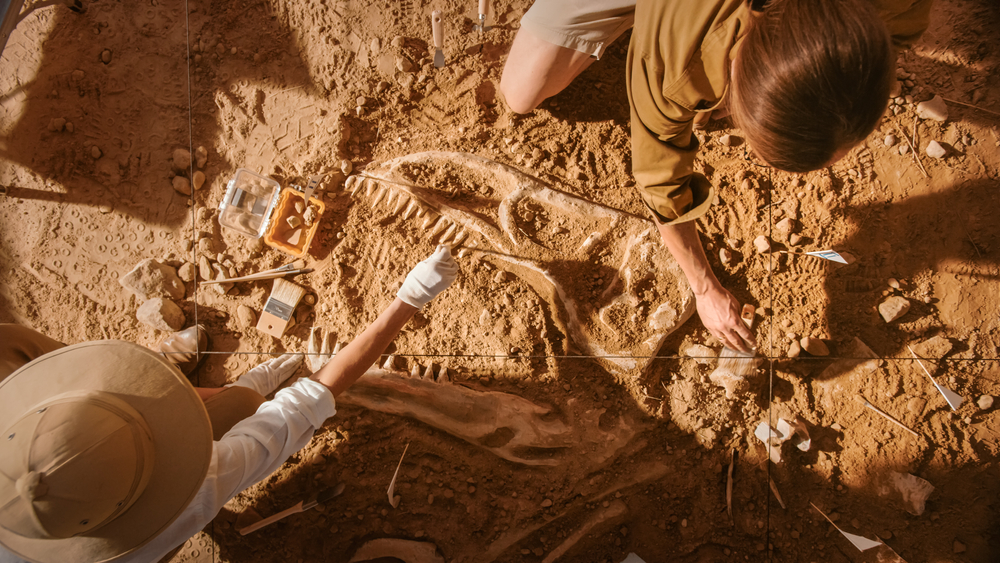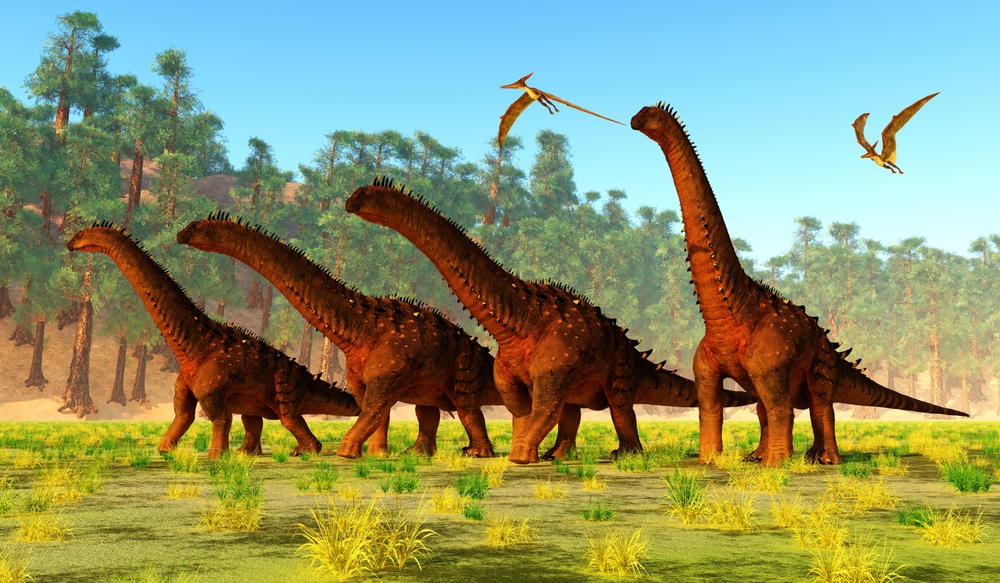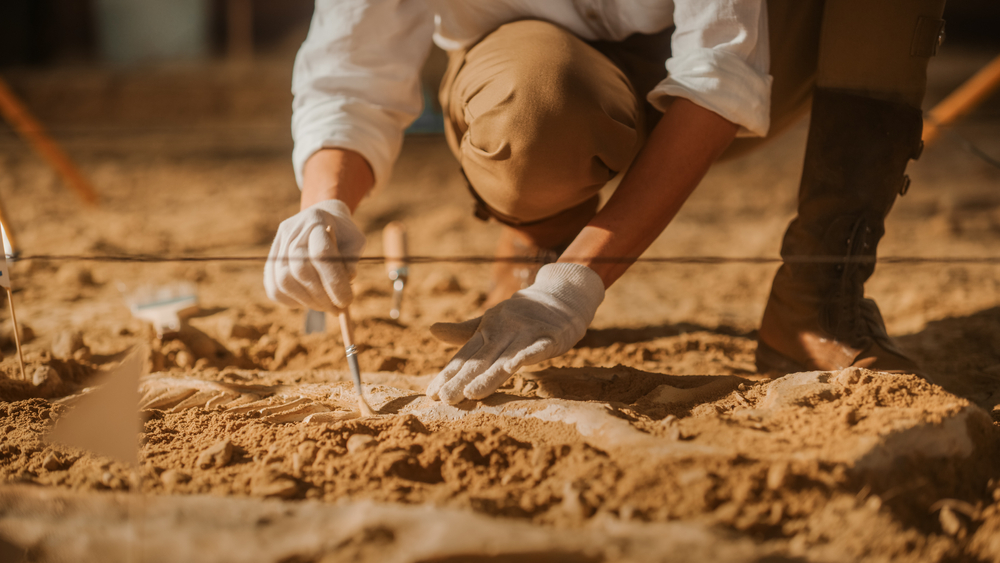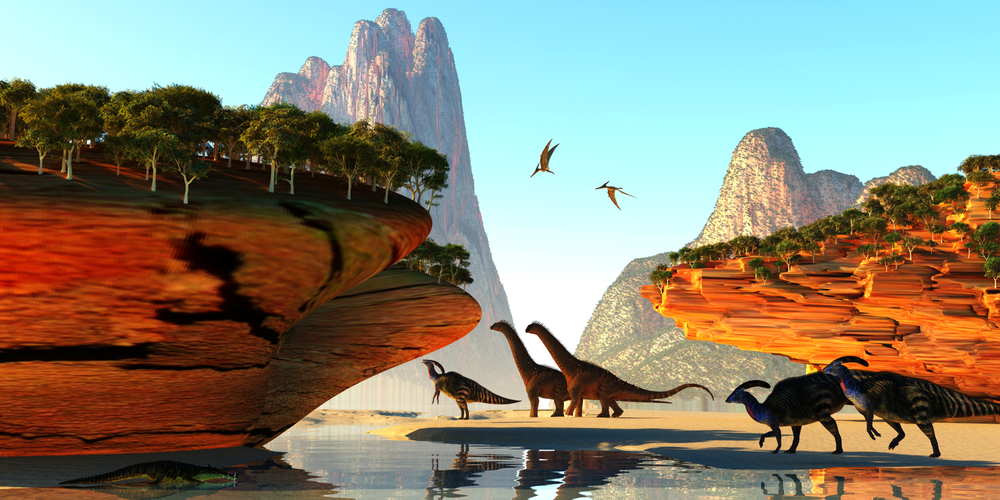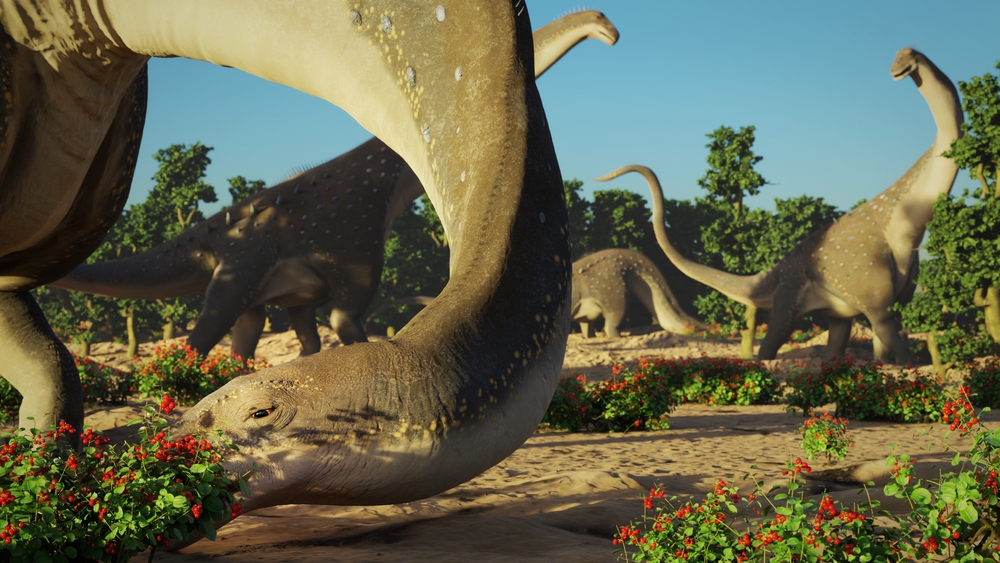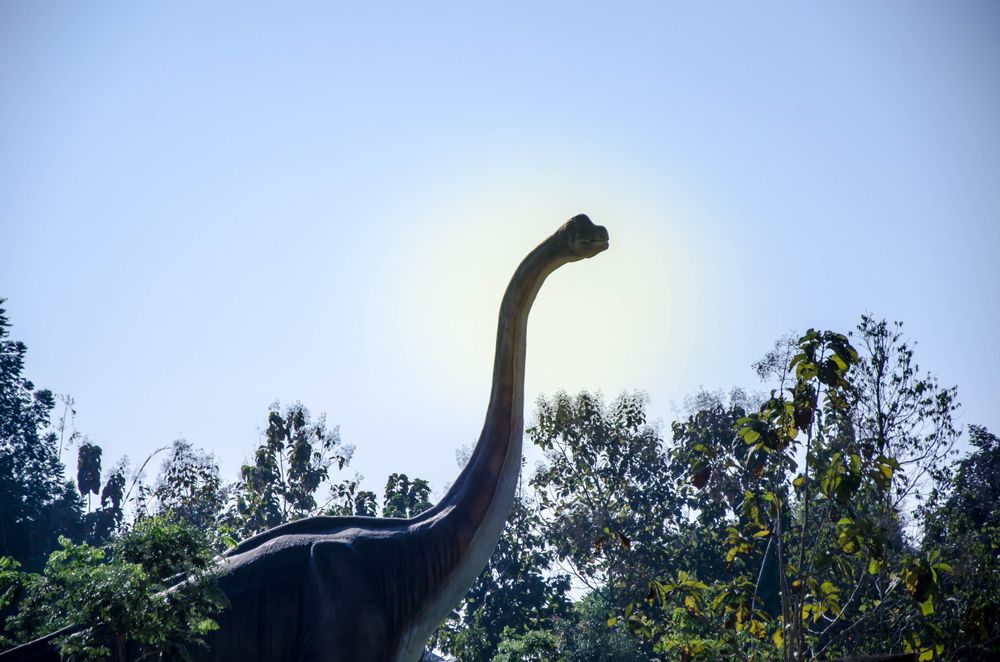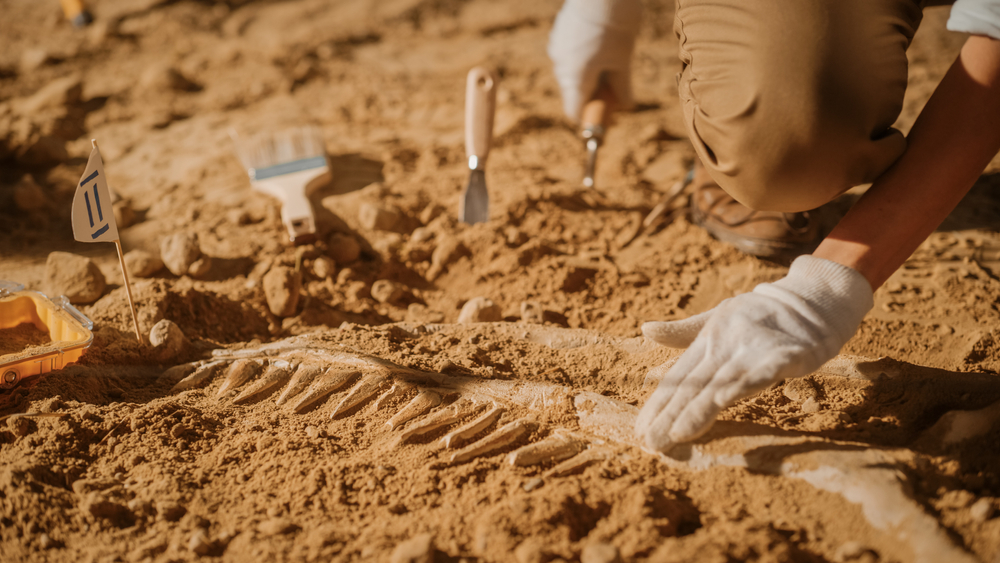A Colossal Find In North America
When paleontologists first unearthed the fossils of Alamosaurus sanjuanensis, they had no idea they were uncovering one of the largest dinosaurs ever to roam North America. This titanic species, belonging to the titanosaurian sauropods, was a late-surviving giant of the Cretaceous period and an essential piece of North America's prehistoric puzzle.
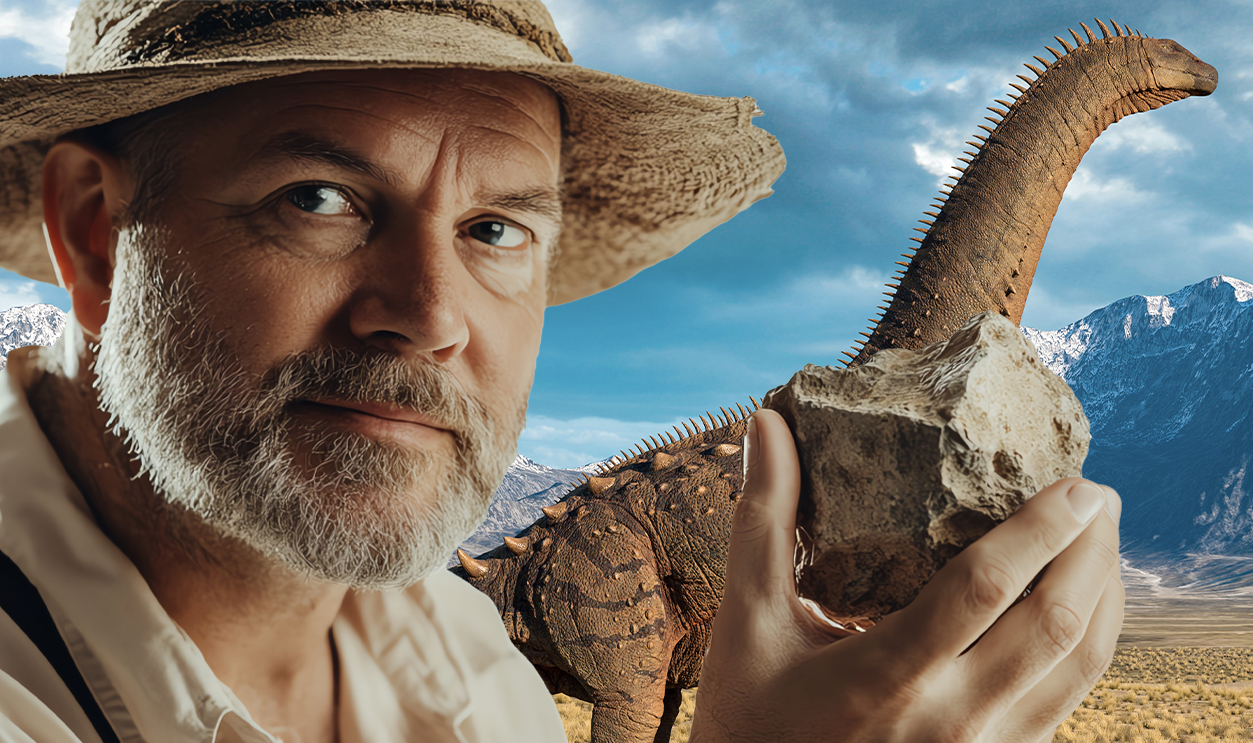
The Alamosaurus
Alamosaurus was a massive, long-necked herbivore that lived during the Maastrichtian age of the Late Cretaceous. It is the only known titanosaur to have inhabited North America after a 30-million-year absence of sauropods from the fossil record, making it a unique and significant discovery.
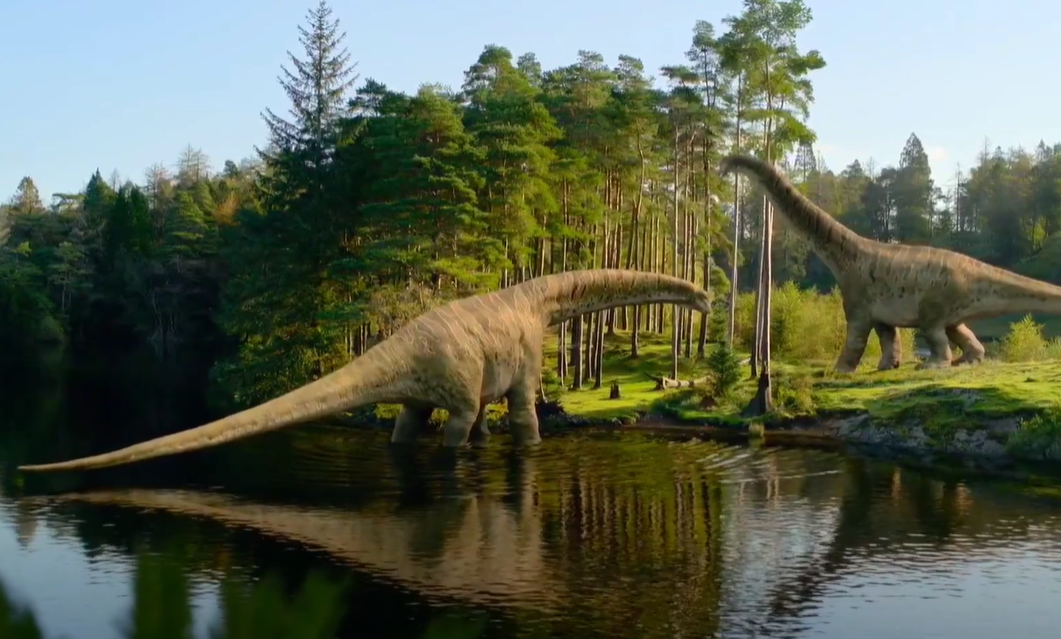 Netflix, Life on Our Planet (2023)
Netflix, Life on Our Planet (2023)
Immigrant From South America
Scientists believe that Alamosaurus likely migrated from South America, where titanosaurs thrived. This migration suggests that prehistoric land connections allowed for the movement of massive creatures across continents, shaping ecosystems in ways that are still being studied today.
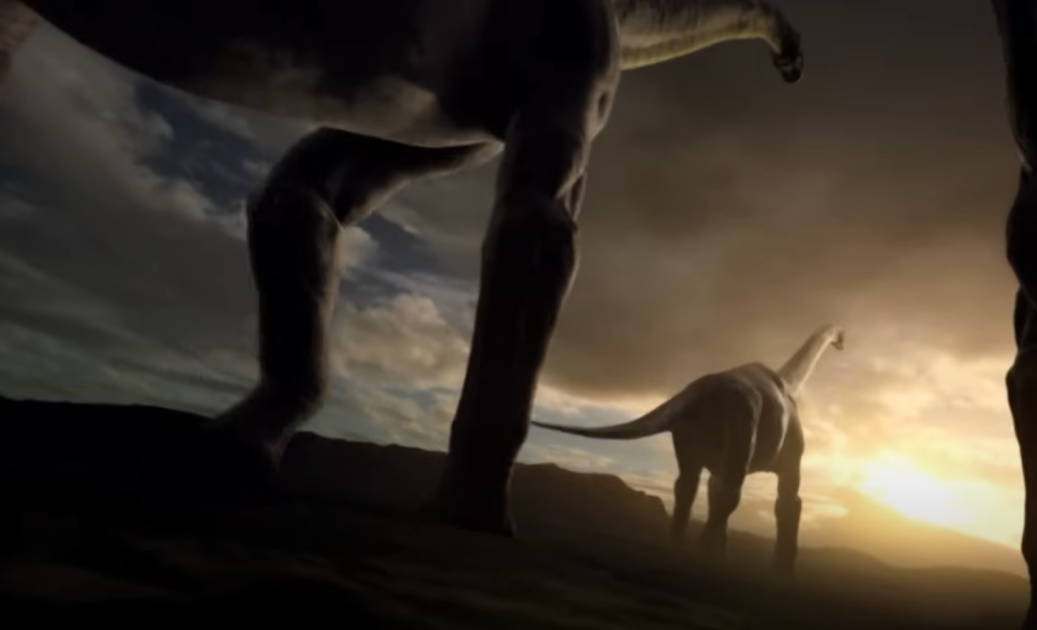 Discovery Channel, Last Day of the Dinosaurs (2010)
Discovery Channel, Last Day of the Dinosaurs (2010)
Alamosaurus Size
The average Alamosaurus reached about 85 feet in length and stood 16 feet tall at the shoulder. It weighed an estimated 30-35 tons, making it one of the largest land animals to ever exist in North America.
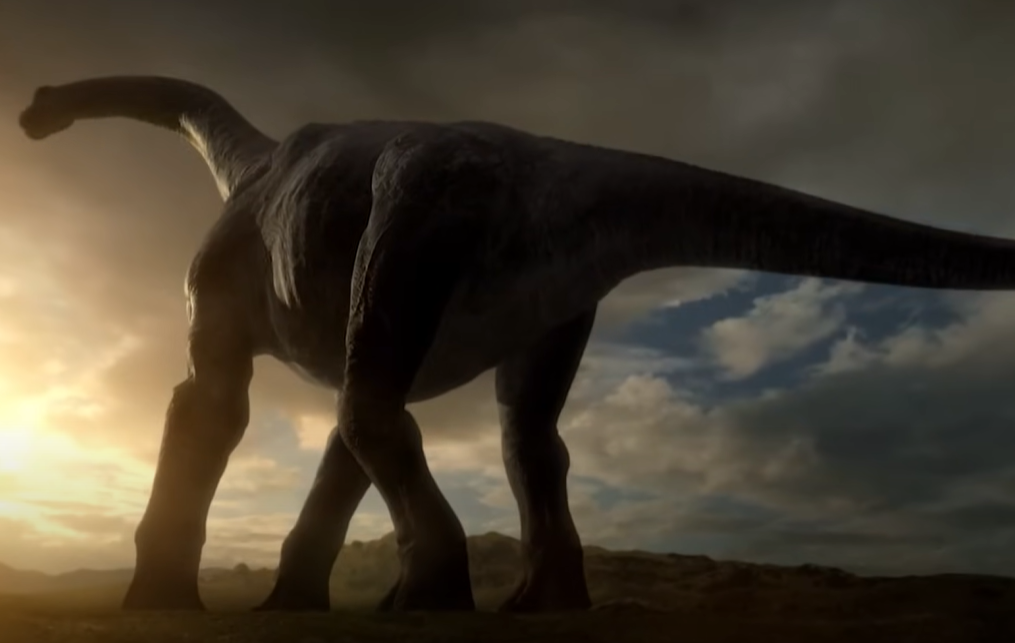 Discovery Channel, Last Day of the Dinosaurs (2010)
Discovery Channel, Last Day of the Dinosaurs (2010)
Pushing The Limits Of Size
Some fossil evidence suggests that Alamosaurus may have grown even larger than originally estimated. Isolated vertebrae and limb bones indicate that it could have reached sizes comparable to Argentinosaurus and Puertasaurus, which were among the largest dinosaurs in the world.
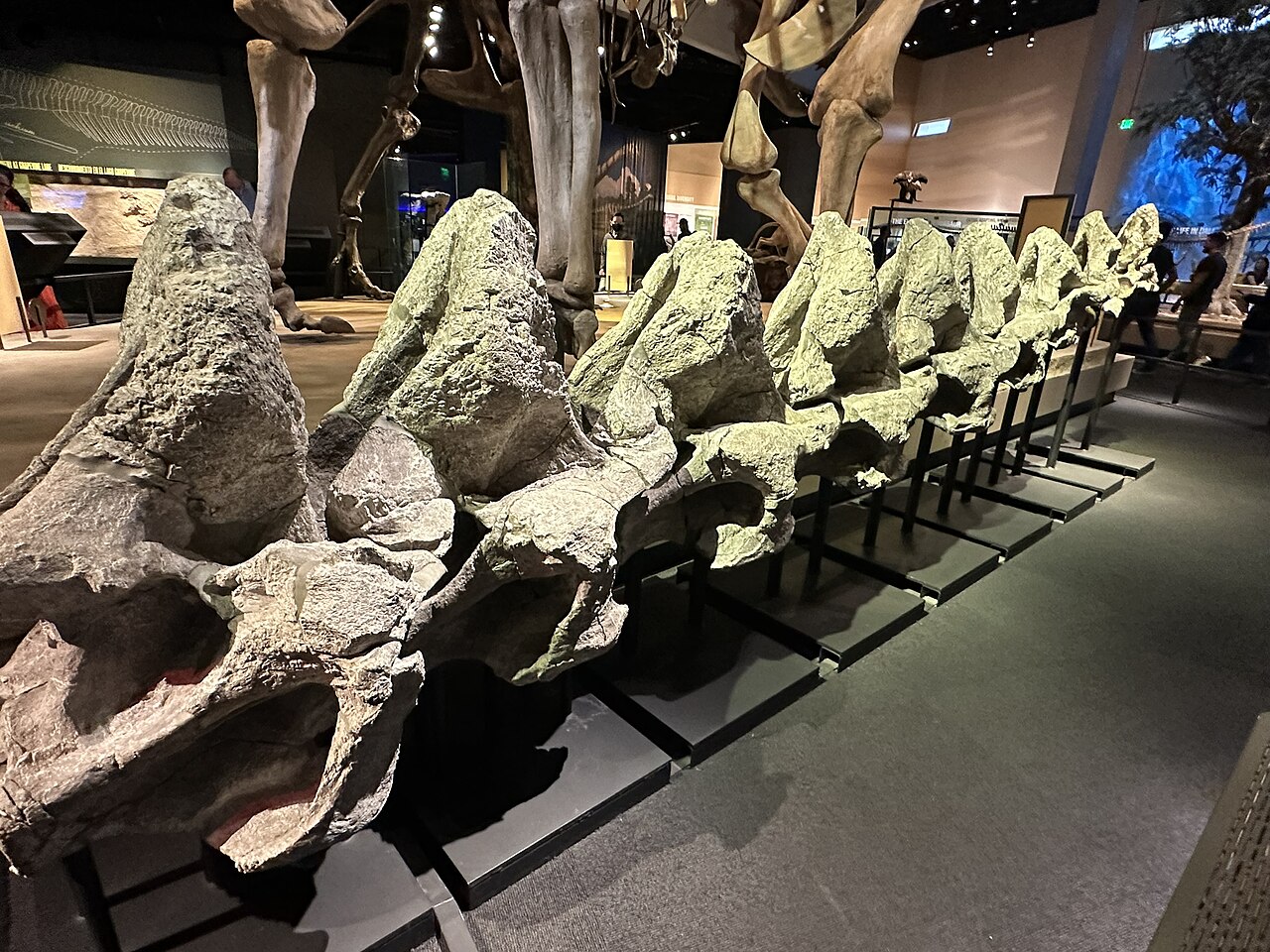 Geekgecko, CC BY 4.0, Wikimedia Commons
Geekgecko, CC BY 4.0, Wikimedia Commons
A Possible Record-Breaker
If these size estimates are accurate, Alamosaurus could be the largest dinosaur ever discovered in North America. This would place it among the heaviest and most imposing sauropods to have ever lived, rivaling its South American relatives in sheer mass.
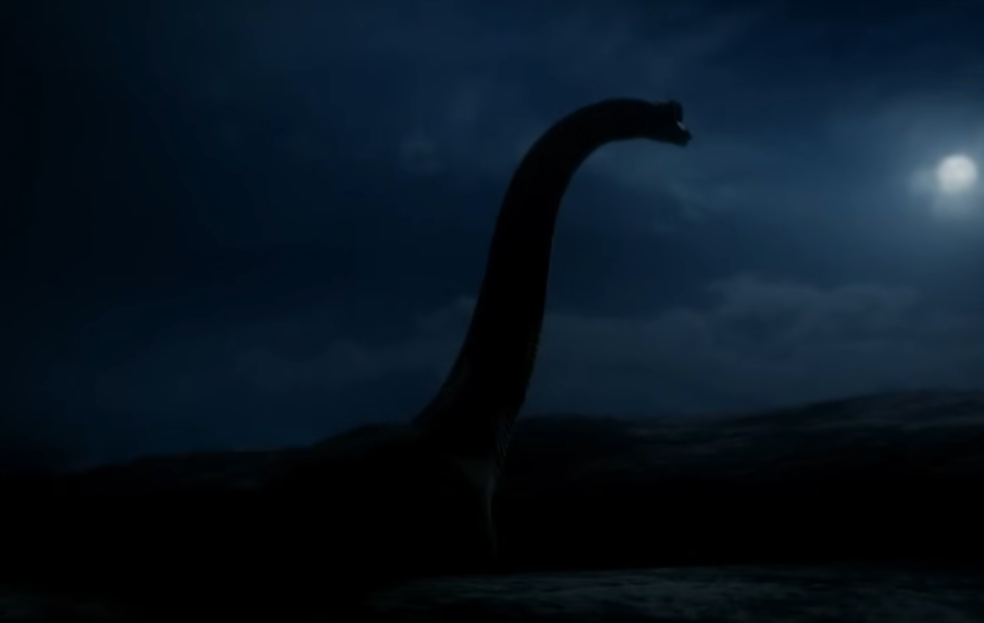 Discovery Channel, Last Day of the Dinosaurs (2010)
Discovery Channel, Last Day of the Dinosaurs (2010)
A Powerful Herbivore
Despite its enormous size, Alamosaurus was a plant-eater, using its long neck to reach vegetation that other herbivores couldn’t access. This ability allowed it to dominate the ecosystem as one of the primary consumers of Late Cretaceous plant life.
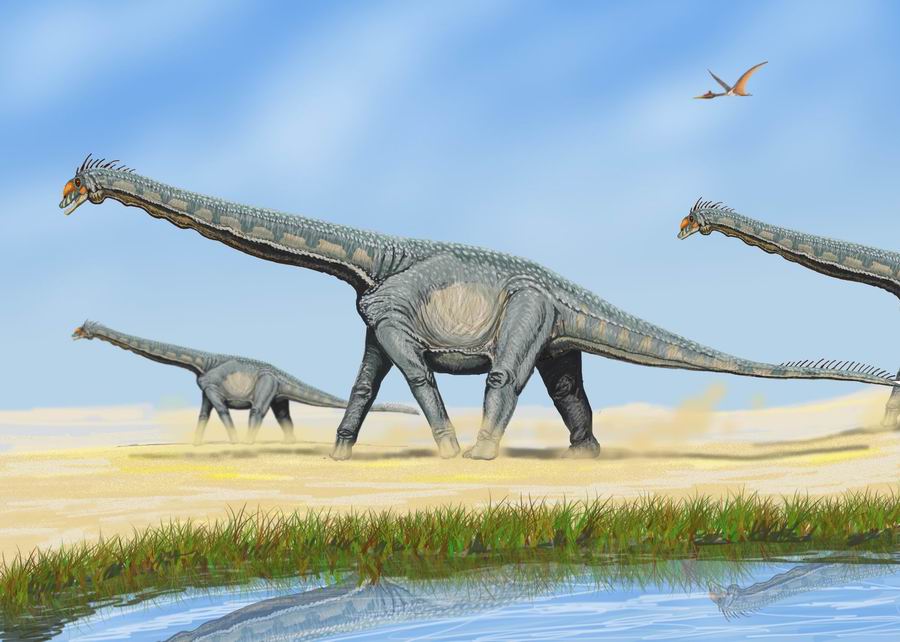 DiBgd, CC BY-SA 3.0, Wikimedia Commons
DiBgd, CC BY-SA 3.0, Wikimedia Commons
Evidence From Fossilized Teeth
Although no Alamosaurus skulls have been found, paleontologists have discovered rod-shaped teeth near its fossils. These teeth likely belonged to the dinosaur and suggest that it fed on a variety of tough vegetation that required specialized teeth for processing.
Discovery Of The First Fossils
The first known fossils of Alamosaurus were discovered in 1921 by a team of Smithsonian paleontologists, including Charles Whitney Gilmore, in New Mexico. This initial discovery laid the foundation for decades of research into the species’ characteristics and evolutionary history.
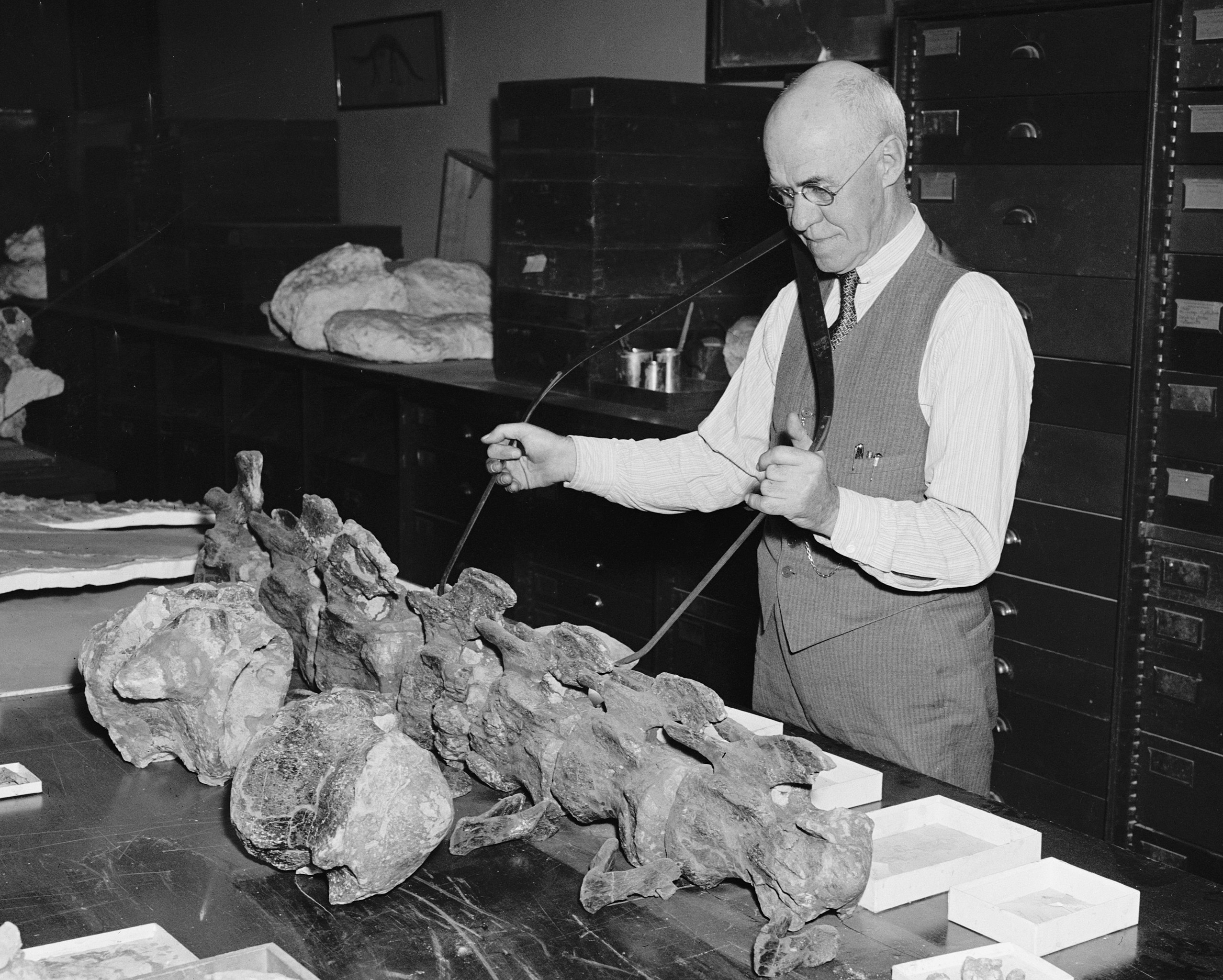 Harris & Ewing, Wikimedia Commons
Harris & Ewing, Wikimedia Commons
Naming Of The Dinosaur
Contrary to popular belief, Alamosaurus was not named after the Alamo in Texas. Instead, its name comes from the Ojo Alamo Formation, where the first fossils were found, linking it directly to its discovery site rather than historical events.
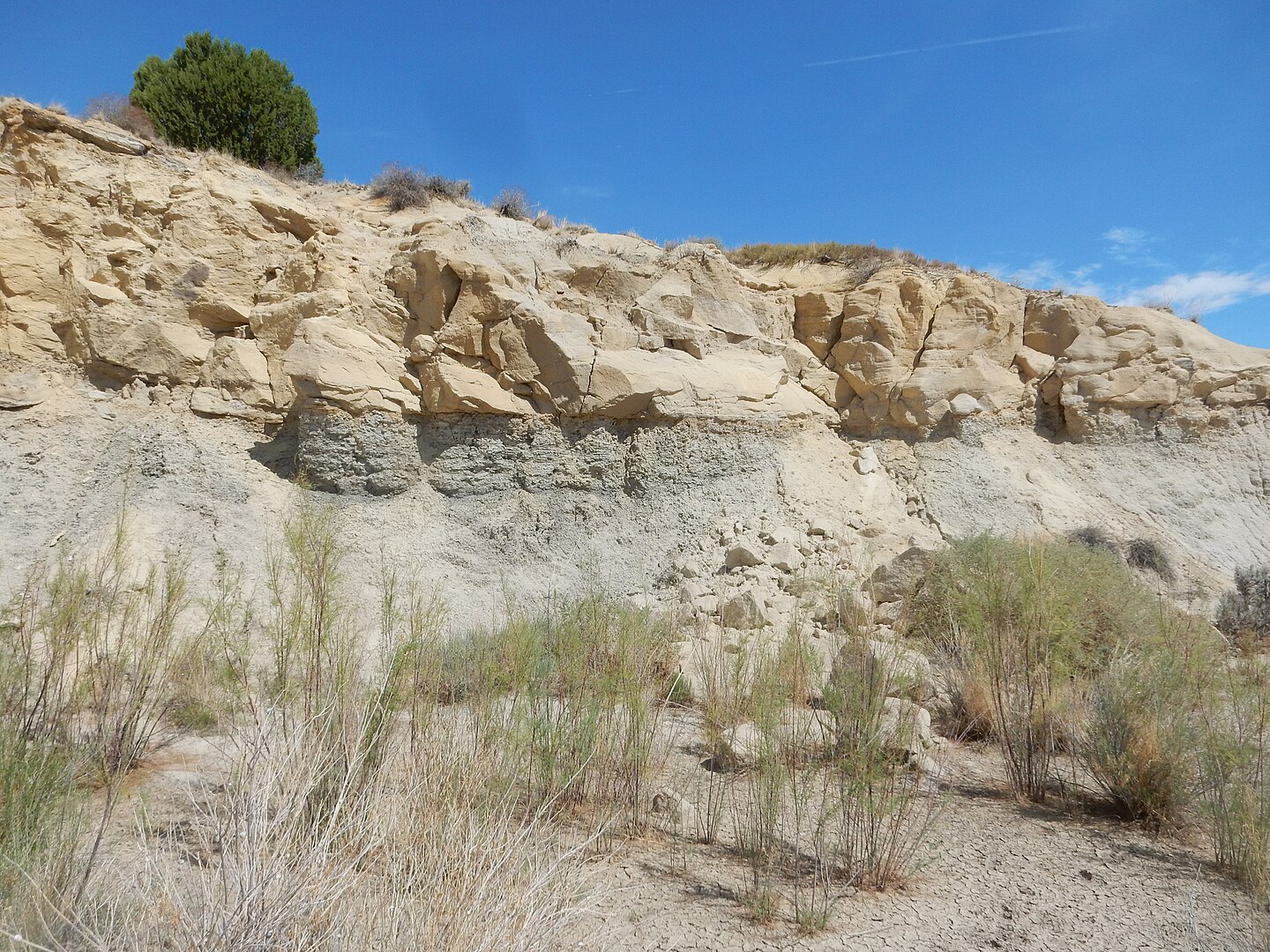 Kent G. Budge, Wikimedia Commons
Kent G. Budge, Wikimedia Commons
A Tribute To San Juan
The species name, sanjuanensis, honors San Juan County, New Mexico, where the original fossils were unearthed. This helps cement its origins in the southwestern United States and ties it to the region’s rich prehistoric heritage.
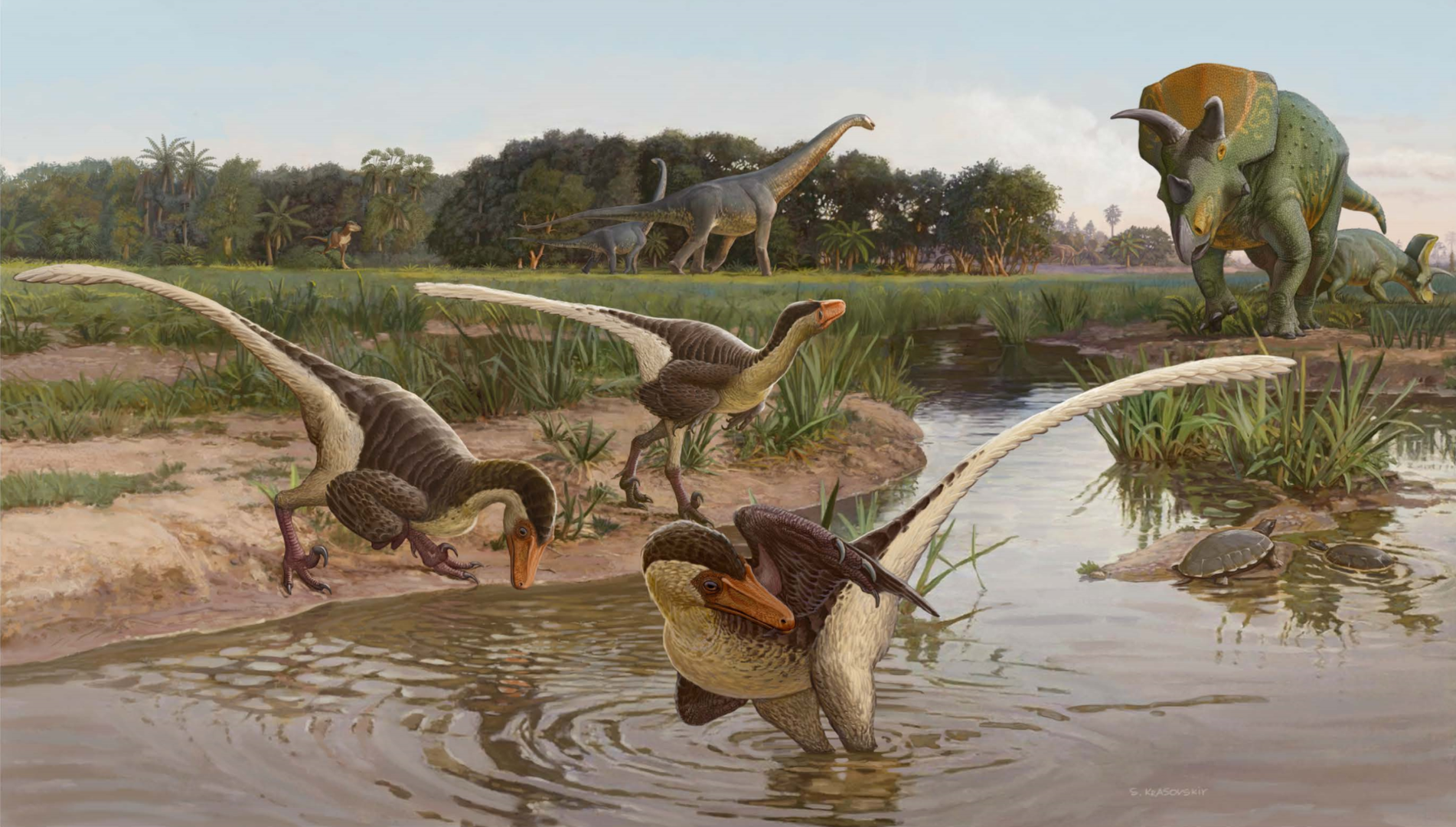 Sergey Krasovskiy, CC BY 4.0, Wikimedia Commons
Sergey Krasovskiy, CC BY 4.0, Wikimedia Commons
Expanding The Fossil Record
Since its initial discovery, Alamosaurus fossils have been found in several other locations, including Texas, Utah, and Wyoming. Each new find adds valuable information about the dinosaur’s range, behavior, and possible adaptations to different environments.
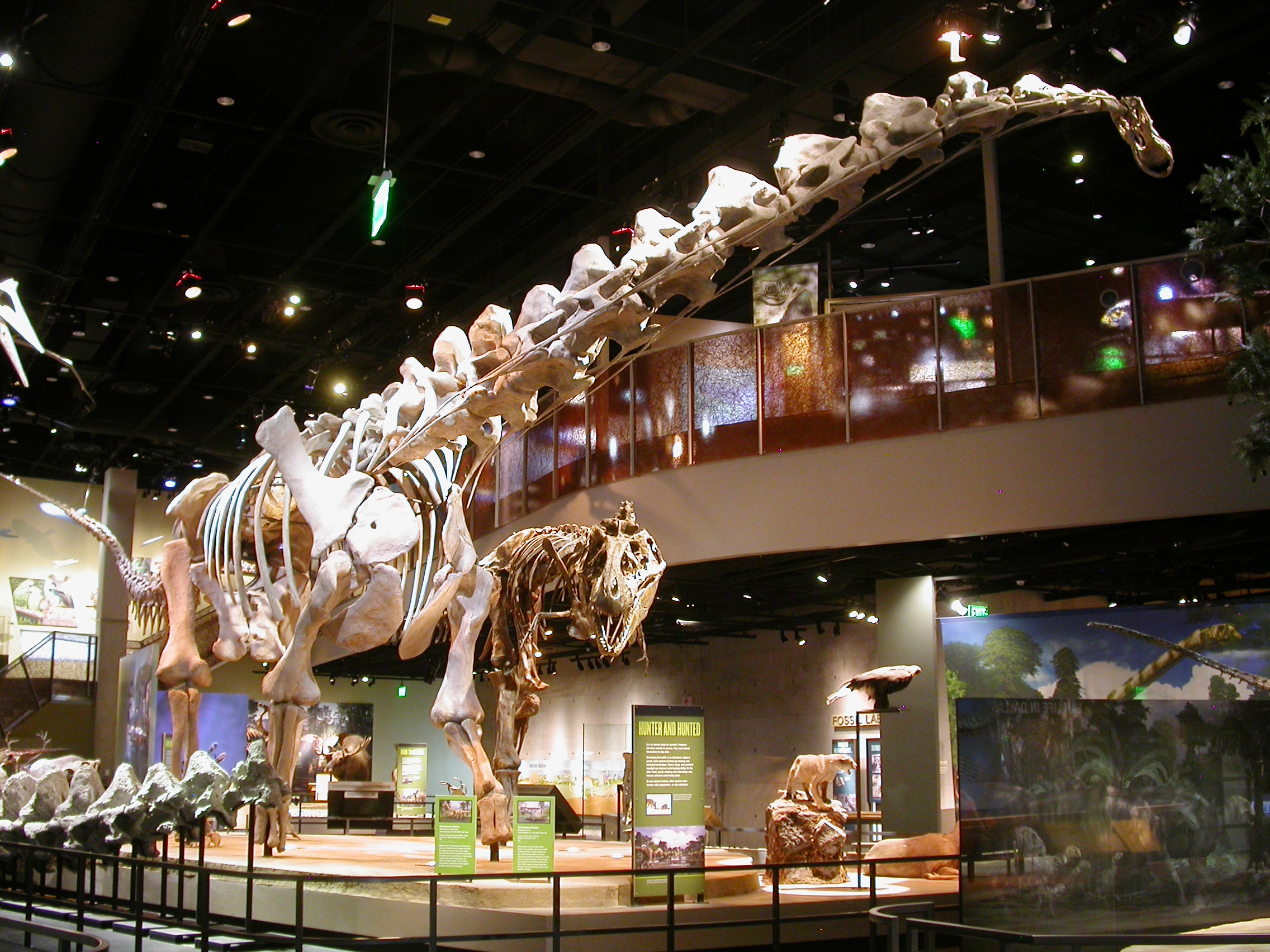 Dr. Matt Wedel, CC BY 4.0, Wikimedia Commons
Dr. Matt Wedel, CC BY 4.0, Wikimedia Commons
An Important Utah Discovery
In 1937, a more complete specimen was found in Utah. This included a nearly complete tail, a right forelimb, and part of the pelvic bones, offering a more detailed look at the structure of this giant dinosaur.
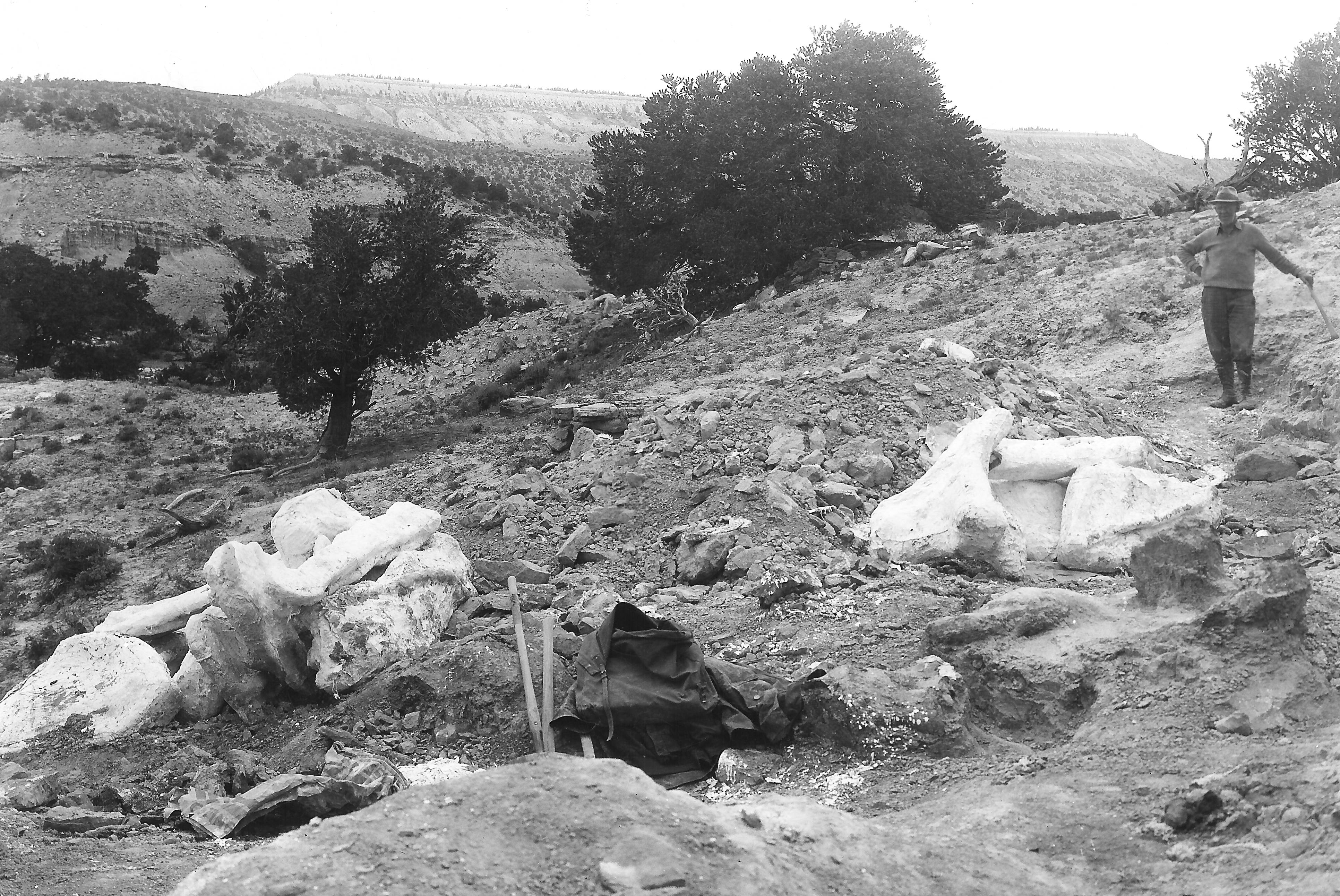 Carpenter, Kenneth, CC BY-SA 4.0, Wikimedia Commons
Carpenter, Kenneth, CC BY-SA 4.0, Wikimedia Commons
Bonebeds Reveal New Clues
Excavations at various sites have uncovered numerous Alamosaurus bones, suggesting that these giants may have traveled in groups. This behavior would have been similar to other sauropods, which likely moved in herds for protection and foraging efficiency.
A Long Lasting Lineage
Fossils of juvenile Alamosaurus have been found just below the Cretaceous-Paleogene boundary in Texas. This means that Alamosaurus was one of the last surviving non-avian dinosaurs before the mass extinction event that wiped out most prehistoric species.
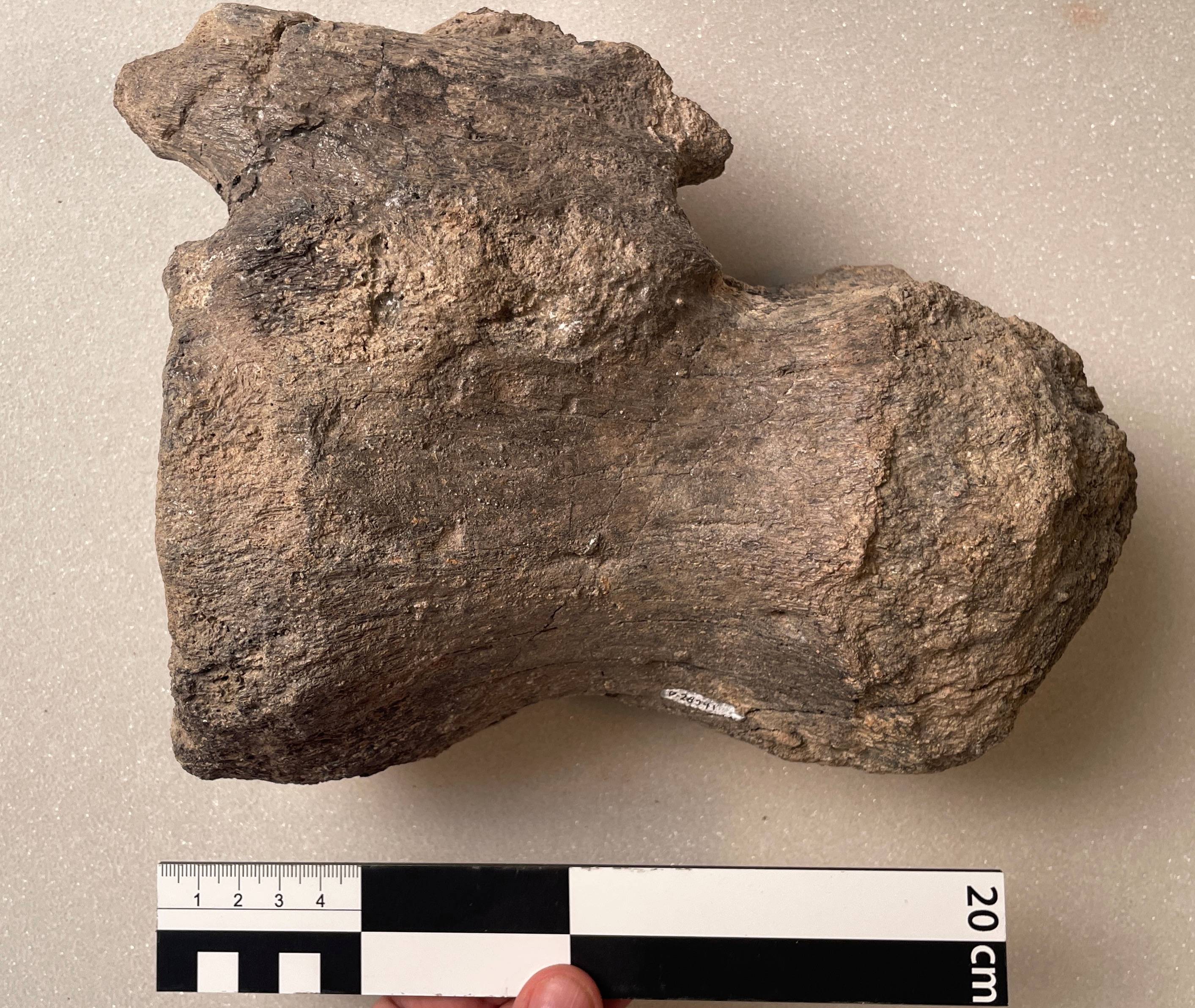 NickLongrich, CC BY-SA 4.0, Wikimedia Commons
NickLongrich, CC BY-SA 4.0, Wikimedia Commons
Growth And Development
Studies show that Alamosaurus grew rapidly, possibly gaining up to 2,200 pounds per year. It likely reached full size within 45 years, making it one of the fastest-growing large dinosaurs known.
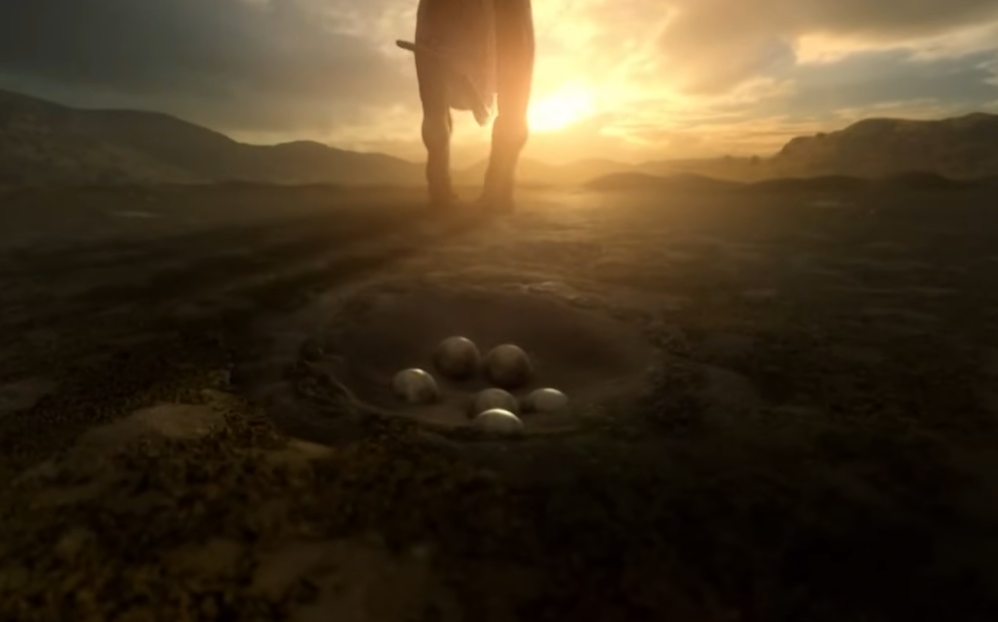 Discovery Channel, Last Day of the Dinosaurs (2010)
Discovery Channel, Last Day of the Dinosaurs (2010)
A Giant In The Fossil Record
Despite its massive presence in prehistoric North America, most of the Alamosaurus fossils discovered so far belong to juveniles or small adults. This makes determining its maximum size difficult, as larger remains rare.
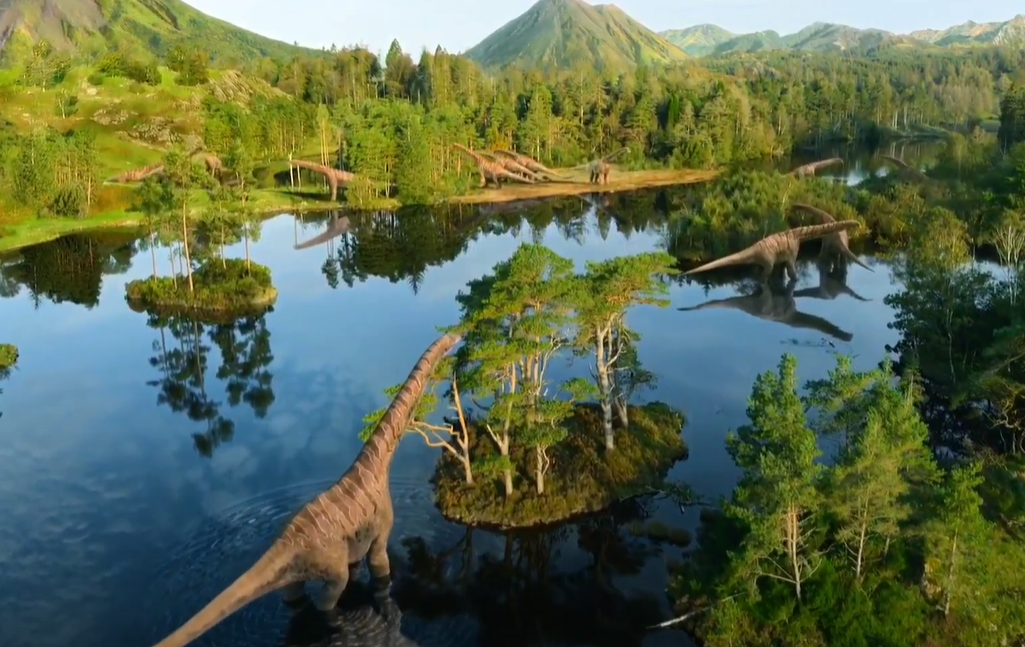 Netflix, Life on Our Planet (2023)
Netflix, Life on Our Planet (2023)
Possible Osteoderm Armor
Some fossil evidence suggests that Alamosaurus may have had bony armor, or osteoderms, similar to other titanosaurs like Saltasaurus. These bony plates may have provided some protection against predators such as large theropods.
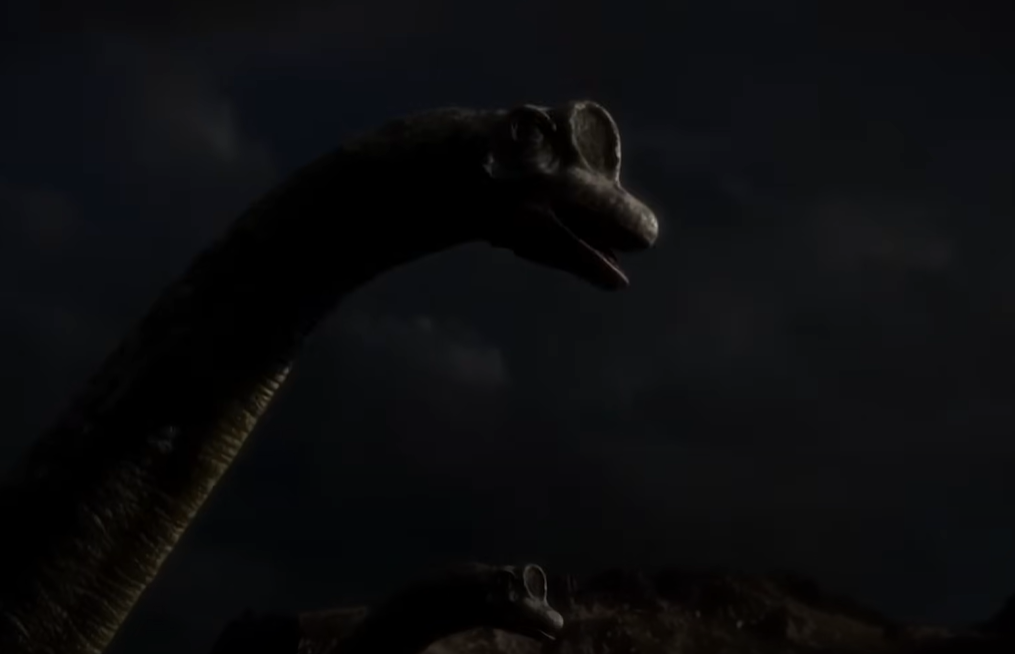 Discovery Channel, Last Day of the Dinosaurs (2010)
Discovery Channel, Last Day of the Dinosaurs (2010)
A Mysterious Titanosaur
Alamosaurus has puzzled paleontologists for decades due to the lack of a complete skeleton. Many aspects of its anatomy, including its skull and full limb structure, remain unknown and are still being reconstructed from related species.
Similarities To South American Titanosaurs
Research indicates that Alamosaurus shared many characteristics with South American titanosaurs like Pellegrinisaurus. This supports the theory that it migrated from South America and adapted to North American environments.
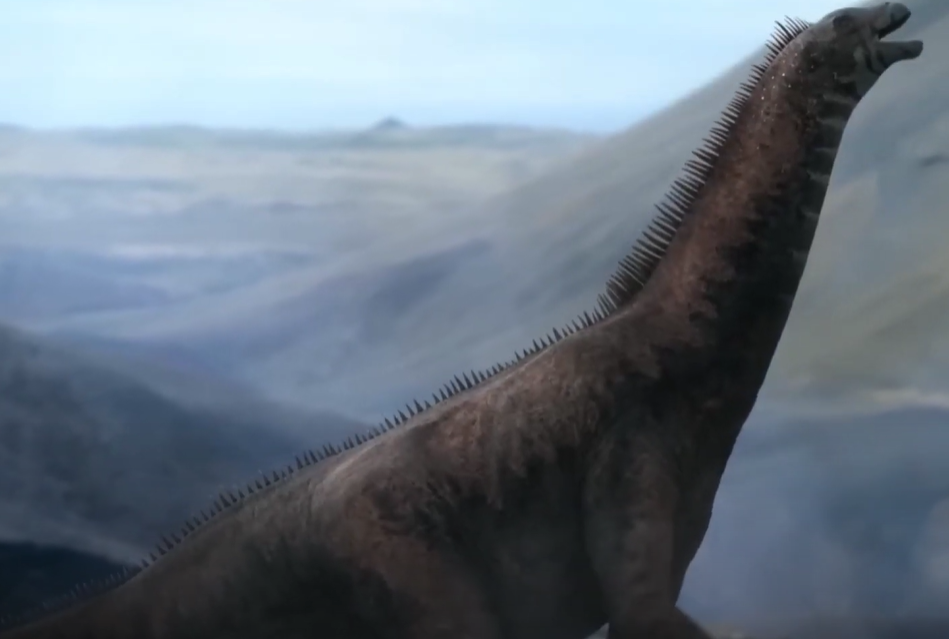 BBC, Prehistoric Planet (2022–2023)
BBC, Prehistoric Planet (2022–2023)
Possible New Species?
Some of the largest limb bones attributed to Alamosaurus might belong to an entirely new species of sauropod. If confirmed, this would further expand our understanding of giant dinosaurs in North America.
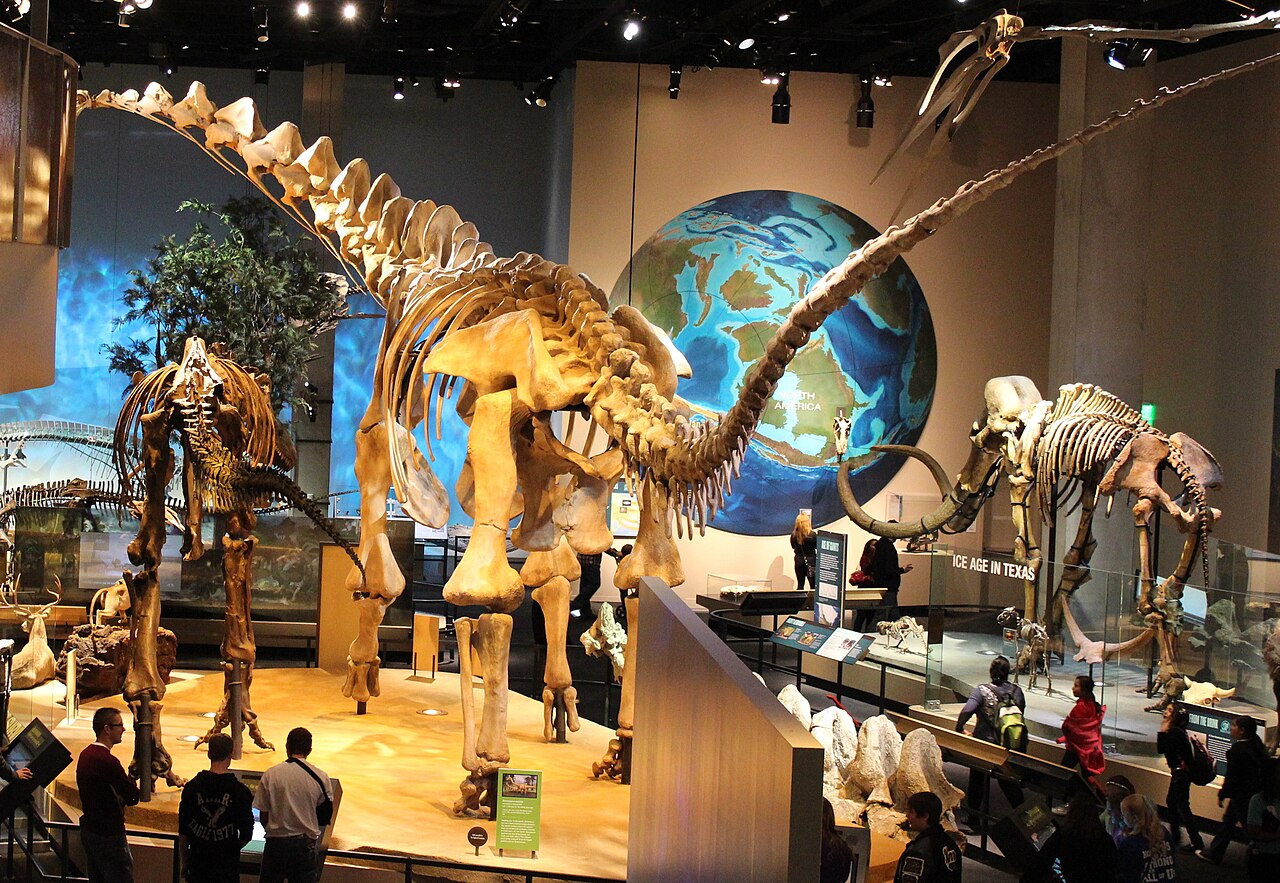 Rodney, CC BY 2.0, Wikimedia Commons
Rodney, CC BY 2.0, Wikimedia Commons
A Changing Landscape
Alamosaurus lived in a diverse ecosystem alongside other Late Cretaceous dinosaurs, including Tyrannosaurus rex, ceratopsians, and large flying reptiles like Quetzalcoatlus. These interactions shaped the prehistoric environment.
An Apex Herbivore
In its environment, Alamosaurus was likely one of the dominant herbivores, influencing plant life and possibly shaping the landscape through its feeding habits.
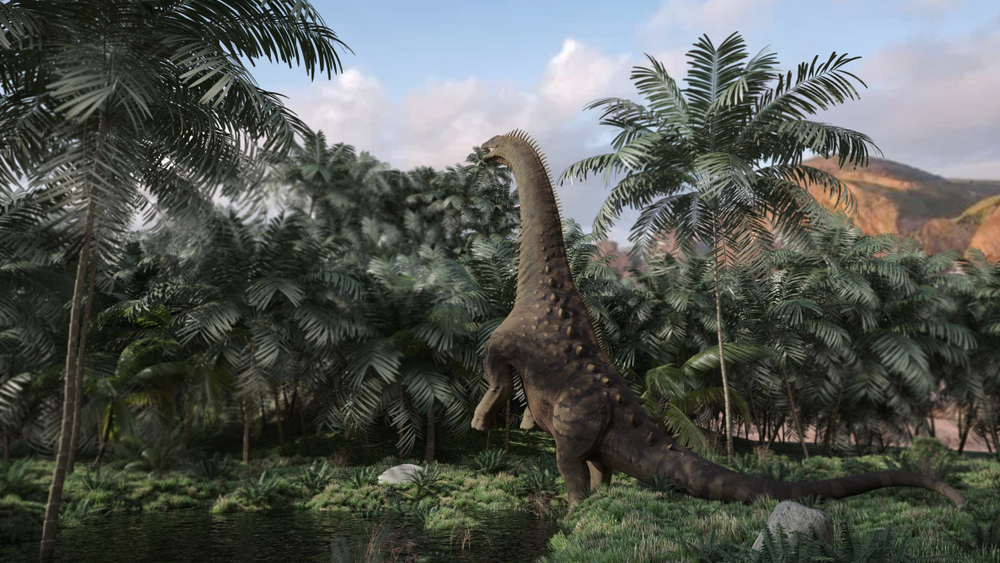 Kostiantyn Ivanyshen, Shutterstock
Kostiantyn Ivanyshen, Shutterstock
Evidence From The Javelina Formation
Some of the best-preserved Alamosaurus fossils come from the Javelina Formation in Texas, dating back approximately 69 million years. These fossils help provide clearer insights into the species' biology and behavior.
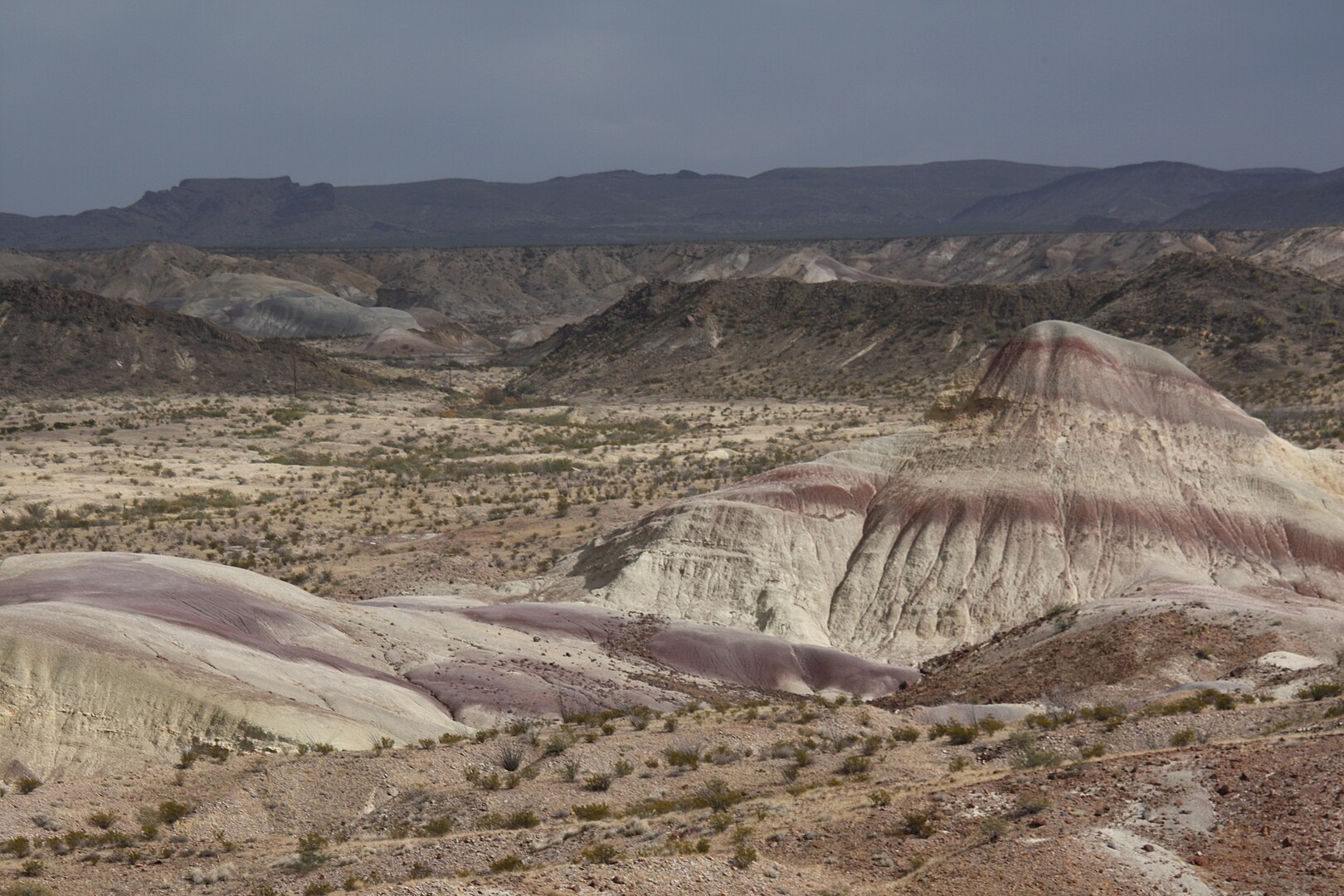 NickLongrich, CC BY-SA 4.0, Wikimedia Commons
NickLongrich, CC BY-SA 4.0, Wikimedia Commons
The Final Days Of The Dinosaurs
The youngest Alamosaurus fossils, found just meters below the K-Pg boundary, suggest that this species was one of the last dinosaurs to walk the Earth before the mass extinction event.
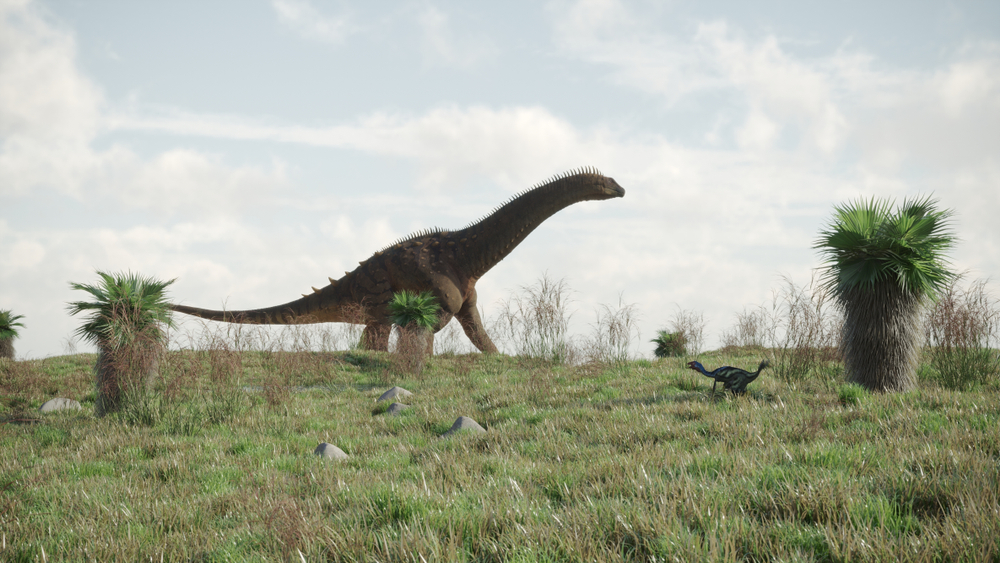 Kostiantyn Ivanyshen, Shutterstock
Kostiantyn Ivanyshen, Shutterstock
Debates Over Classification
Since its discovery, Alamosaurus has been classified as a titanosaur, but its exact placement within the group is still debated among paleontologists. Some propose it belongs in different subgroups based on its bone structure.
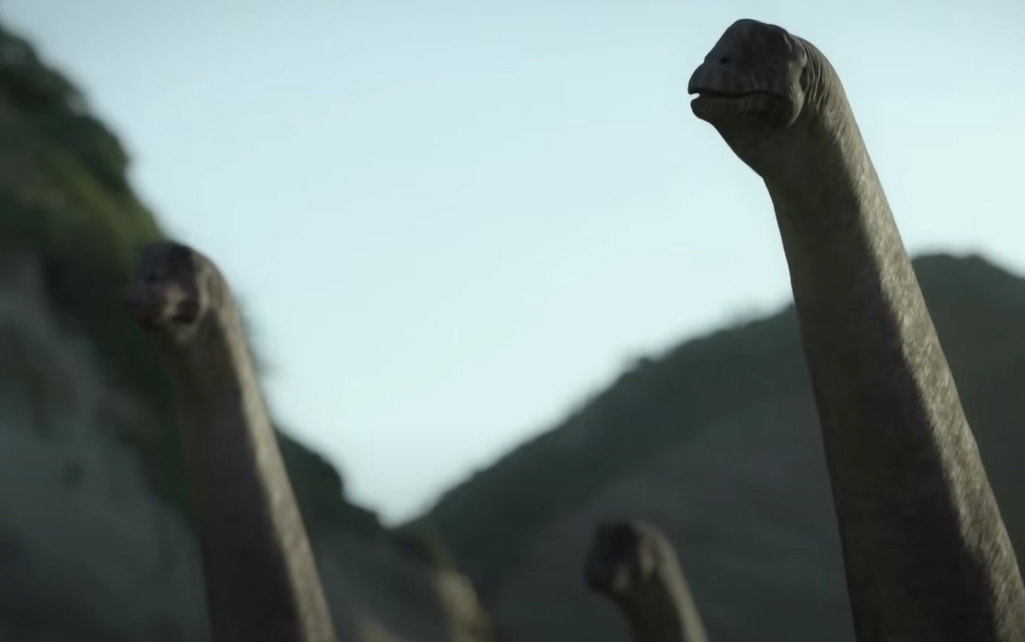 BBC, Prehistoric Planet (2022–2023)
BBC, Prehistoric Planet (2022–2023)
A Lone Giant In North America
Alamosaurus is unique in that it was the only known titanosaur living in North America during the Late Cretaceous. It stood apart from the diverse sauropods of earlier periods and remains an evolutionary anomaly.
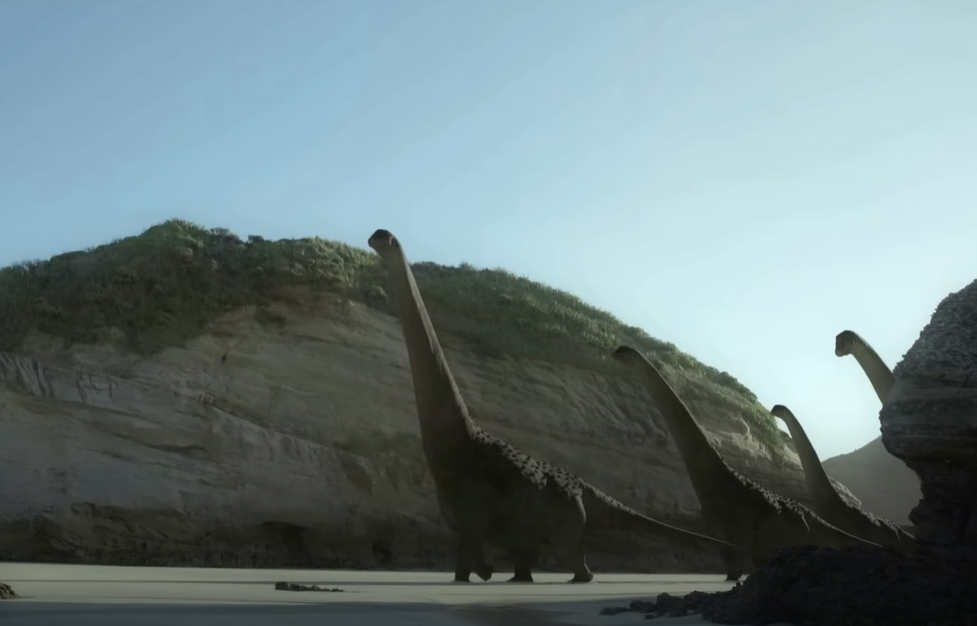 BBC, Prehistoric Planet (2022–2023)
BBC, Prehistoric Planet (2022–2023)
Migration Theories
Scientists propose that Alamosaurus may have arrived in North America via land bridges or island chains connecting the continents during the Late Cretaceous. These routes would have allowed large dinosaurs to migrate across vast distances.
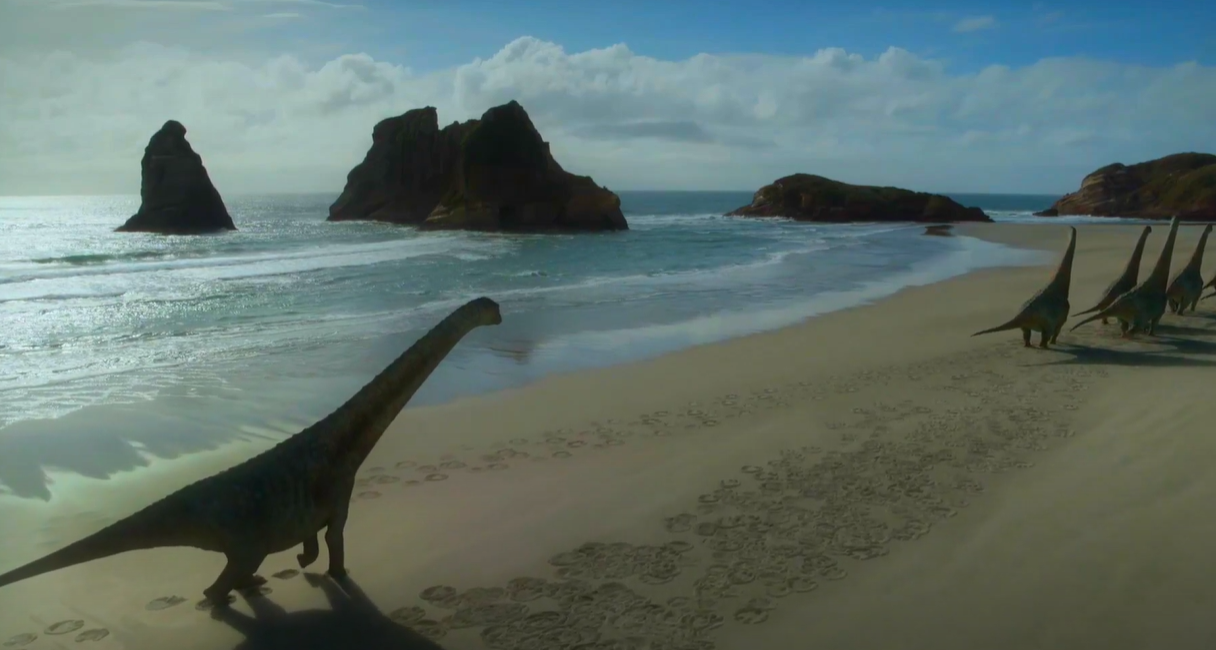 BBC, Prehistoric Planet (2022–2023)
BBC, Prehistoric Planet (2022–2023)
A Role In Prehistoric Texas
In Texas, Alamosaurus fossils are often found alongside Quetzalcoatlus, a giant pterosaur. This suggests that they shared the same habitat and possibly interacted within their ecosystem.
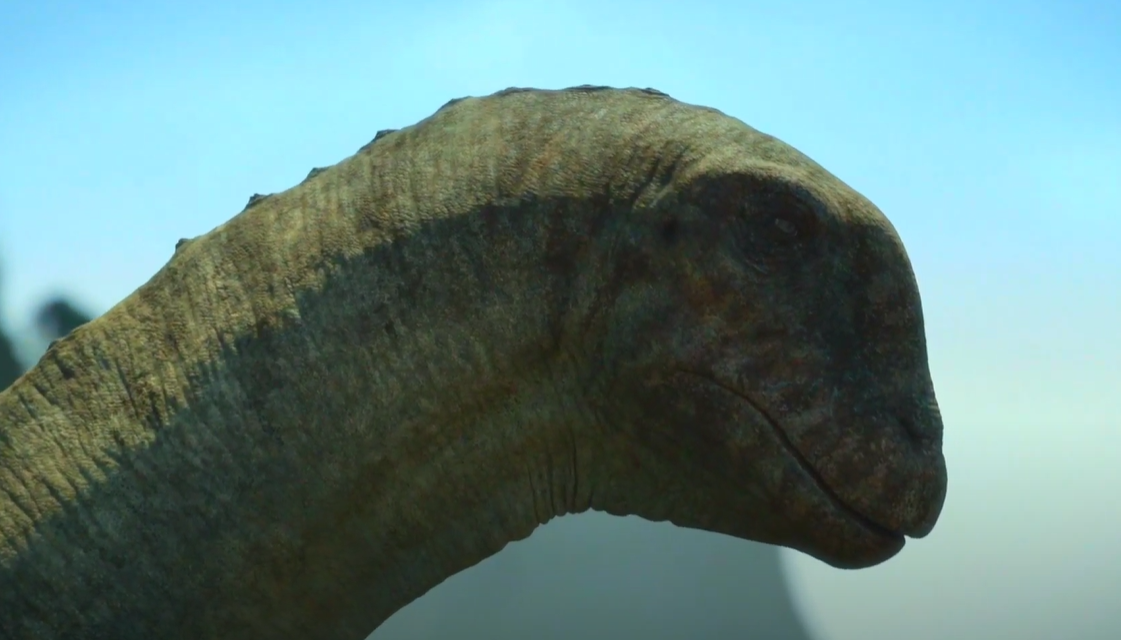 BBC, Prehistoric Planet (2022–2023)
BBC, Prehistoric Planet (2022–2023)
The Importance Of Fossil Preservation
Preserving fossils like those of Alamosaurus is crucial for understanding prehistoric life and the evolution of dinosaurs. By carefully excavating and studying these remains, scientists can uncover new details about how these massive creatures lived, interacted, and ultimately vanished.
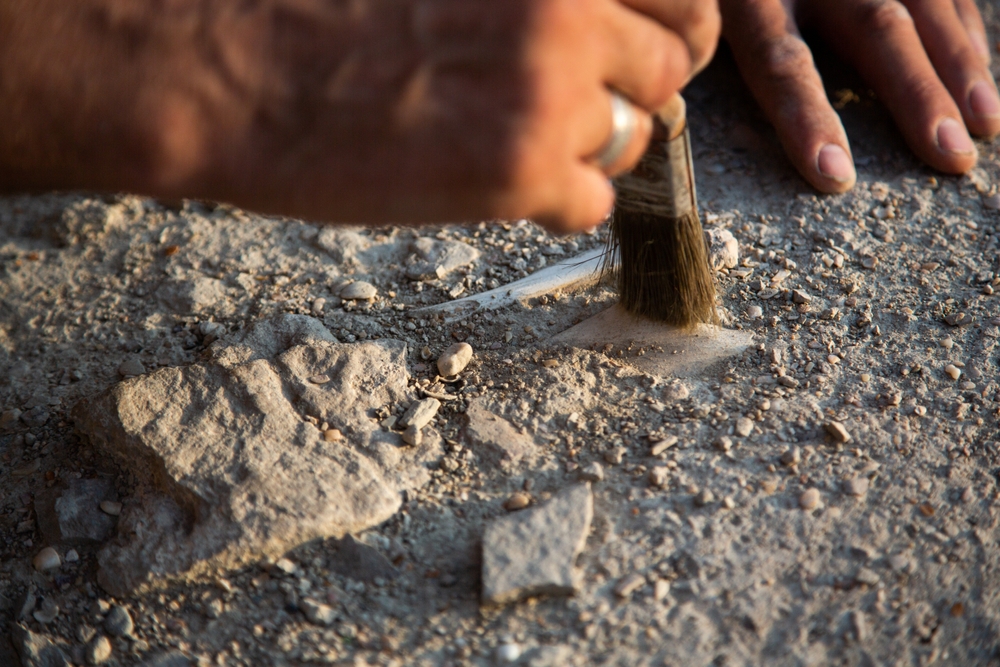 Kostyantyn Skuridin, Shutterstock
Kostyantyn Skuridin, Shutterstock
The Impact Of Alamosaurus On Paleontology
The discovery of Alamosaurus has significantly influenced the study of titanosaurs and Late Cretaceous ecosystems. Its fossils have helped scientists better understand sauropod evolution and their survival strategies during the final age of dinosaurs.
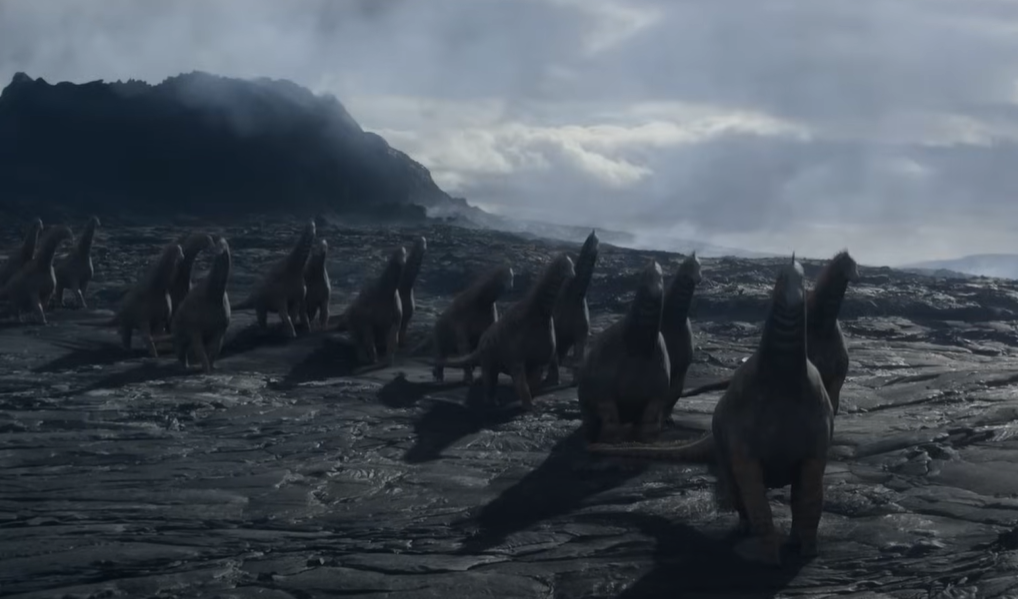 BBC, Prehistoric Planet (2022–2023)
BBC, Prehistoric Planet (2022–2023)
The Role Of Alamosaurus In Ecosystem Dynamics
As one of the largest herbivores of its time, Alamosaurus likely played a crucial role in shaping its environment. By consuming vast amounts of vegetation, it may have influenced plant distribution, soil composition, and the survival of smaller herbivores in its ecosystem.
Alamosaurus And Climate Change
The environment of Late Cretaceous North America was vastly different from today, with a warmer climate and abundant vegetation. Studying Alamosaurus fossils can provide insight into how prehistoric animals adapted to climate shifts and how modern species might respond to similar changes.
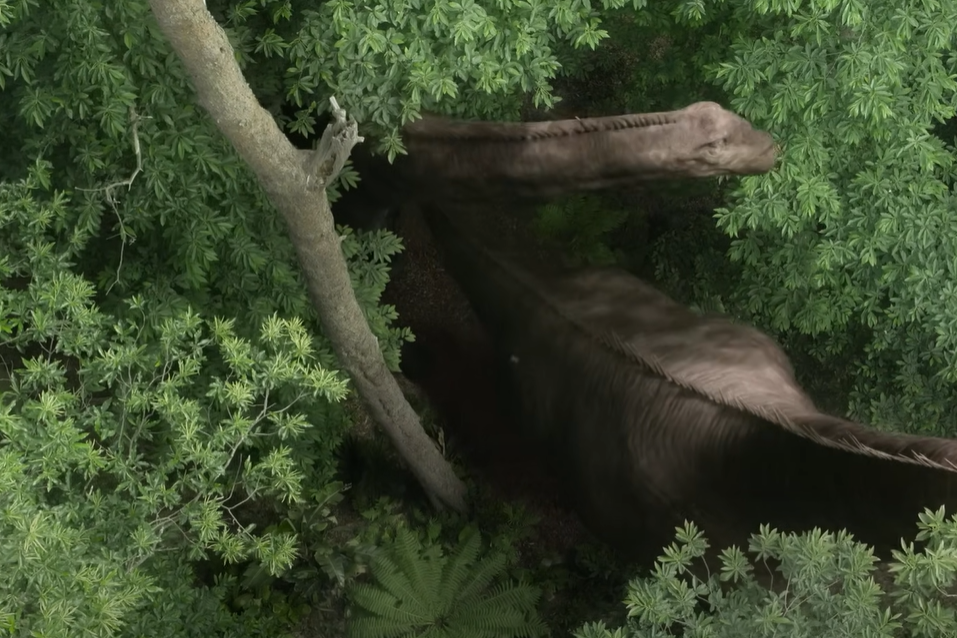 BBC, Prehistoric Planet (2022–2023)
BBC, Prehistoric Planet (2022–2023)
The Role Of Alamosaurus In Dinosaur Evolution
Alamosaurus represents a key link in the evolutionary history of titanosaurs, providing evidence of how these massive herbivores spread across continents. Understanding its adaptations can help paleontologists trace the lineage of long-necked dinosaurs and their survival strategies.
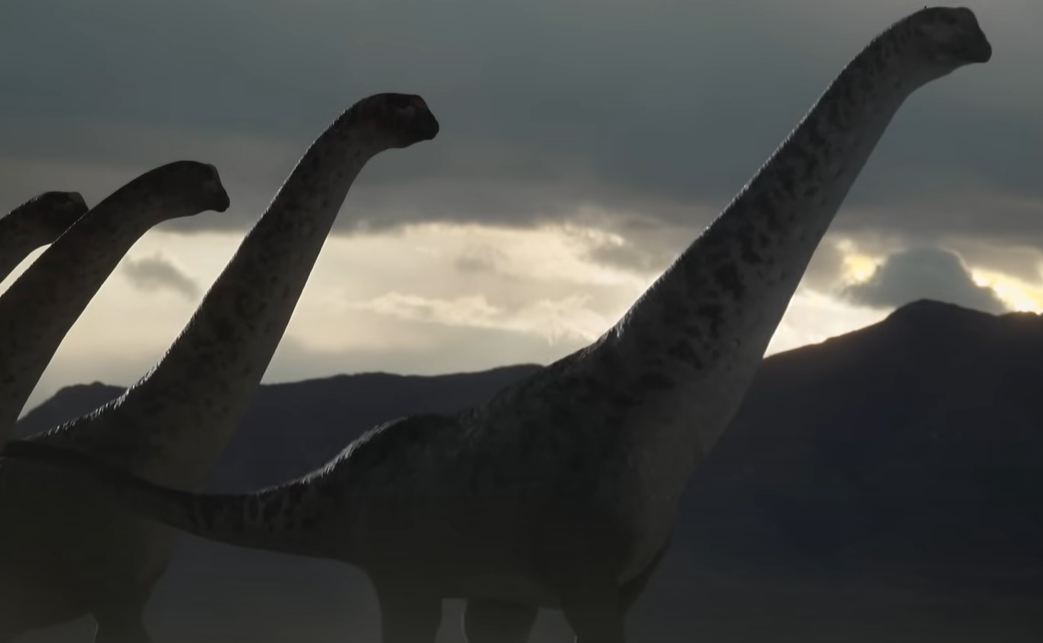 BBC, Prehistoric Planet (2022–2023)
BBC, Prehistoric Planet (2022–2023)
Alamosaurus And Other Titanosaurs
Comparing Alamosaurus to other titanosaurs, such as Argentinosaurus and Puertasaurus, helps scientists determine how these giants differed in structure and behavior. While similar in size, each species had unique features that helped them thrive in their respective environments.
Predator-Prey Relationships
As one of the largest herbivores of its time, Alamosaurus likely had few natural predators. However, young or injured individuals may have been targeted by large theropods like Tyrannosaurus rex, creating a dynamic predator-prey relationship in the Late Cretaceous ecosystem.
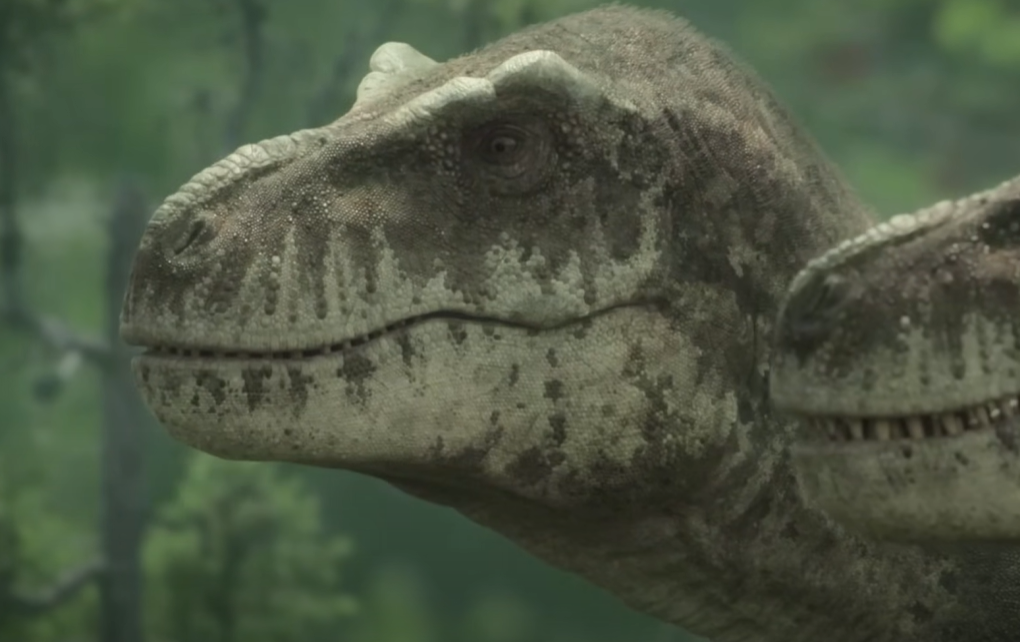 BBC, Prehistoric Planet (2022–2023)
BBC, Prehistoric Planet (2022–2023)
The Mystery Of The Missing Skull
Despite numerous fossil discoveries, no complete Alamosaurus skull has ever been found. Paleontologists continue to search for this crucial piece of the puzzle, which could provide valuable information about its feeding habits and sensory capabilities.
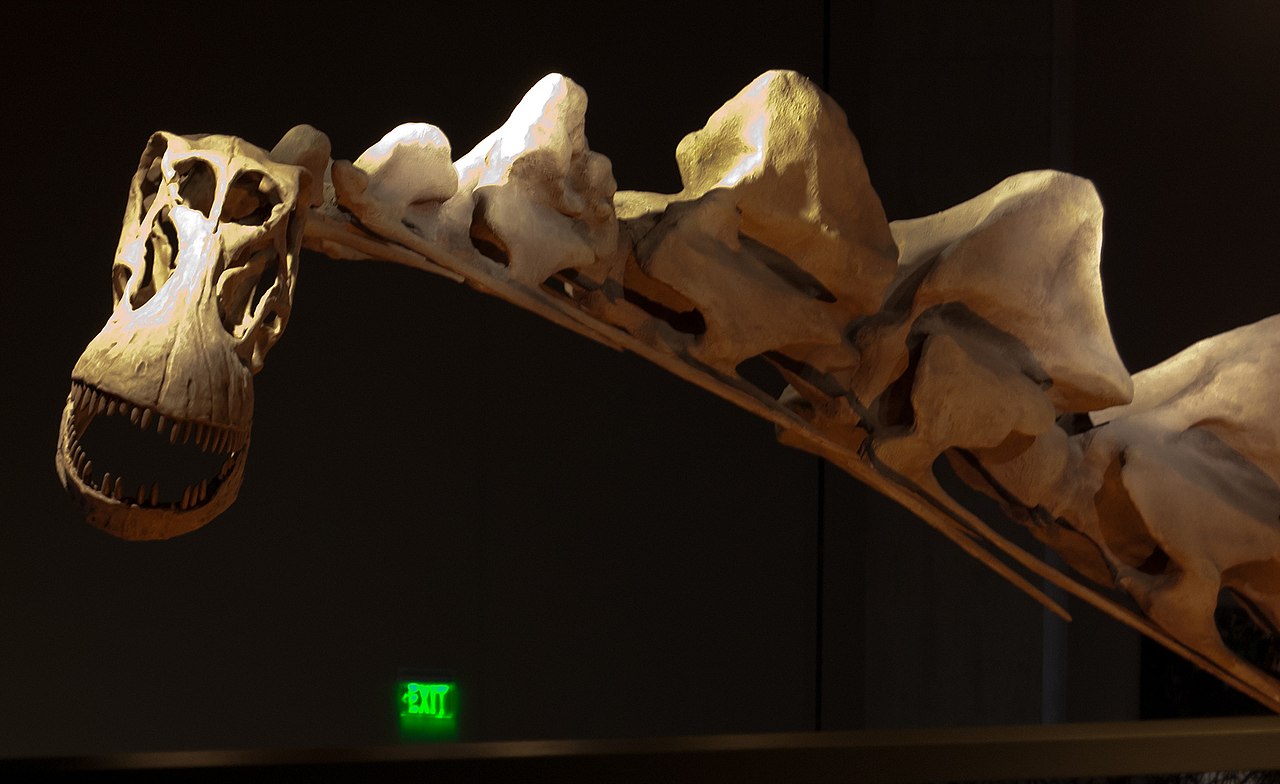 A Davis, CC BY 2.0, Wikimedia Commons
A Davis, CC BY 2.0, Wikimedia Commons
Future Discoveries
With ongoing excavations and advancements in paleontology, more Alamosaurus fossils are likely to be found. Each new discovery has the potential to reveal groundbreaking insights about this prehistoric giant and its place in Earth's history.
Continuing Discoveries
Even today, new fossils and research continue to reshape our understanding of Alamosaurus. Each discovery adds more pieces to the puzzle of this giant dinosaur’s place in history and evolution.
You May Also Like:
Photos Of What The Dinosaurs Really Looked Like
The Man Who Named Dinosaurs Was An Absolute Trainwreck
The Trouble With Dinosaurs: The Bizarre Saga Of One Very Weird Monster
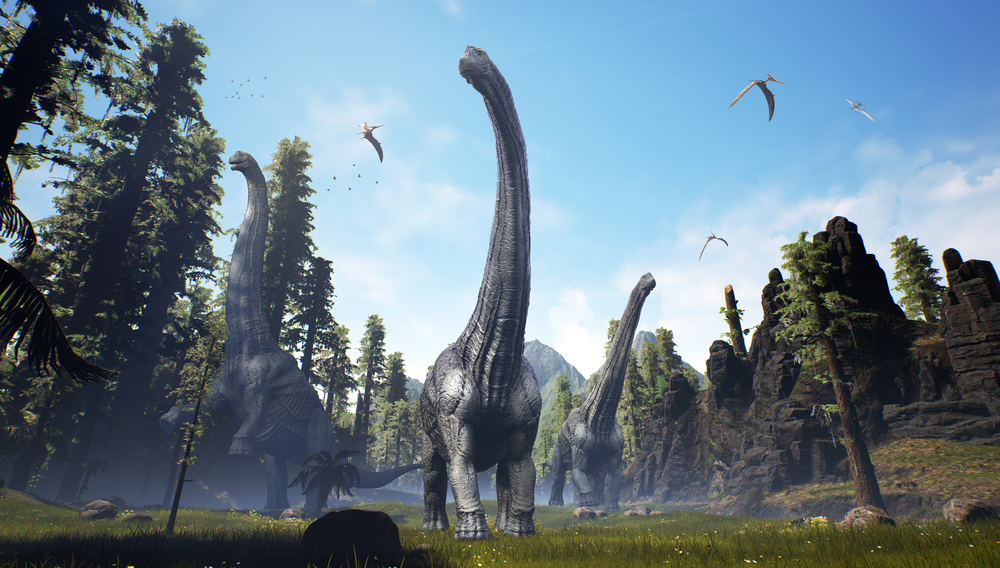 Herschel Hoffmeyer, Shutterstock
Herschel Hoffmeyer, Shutterstock
Sources: 1

